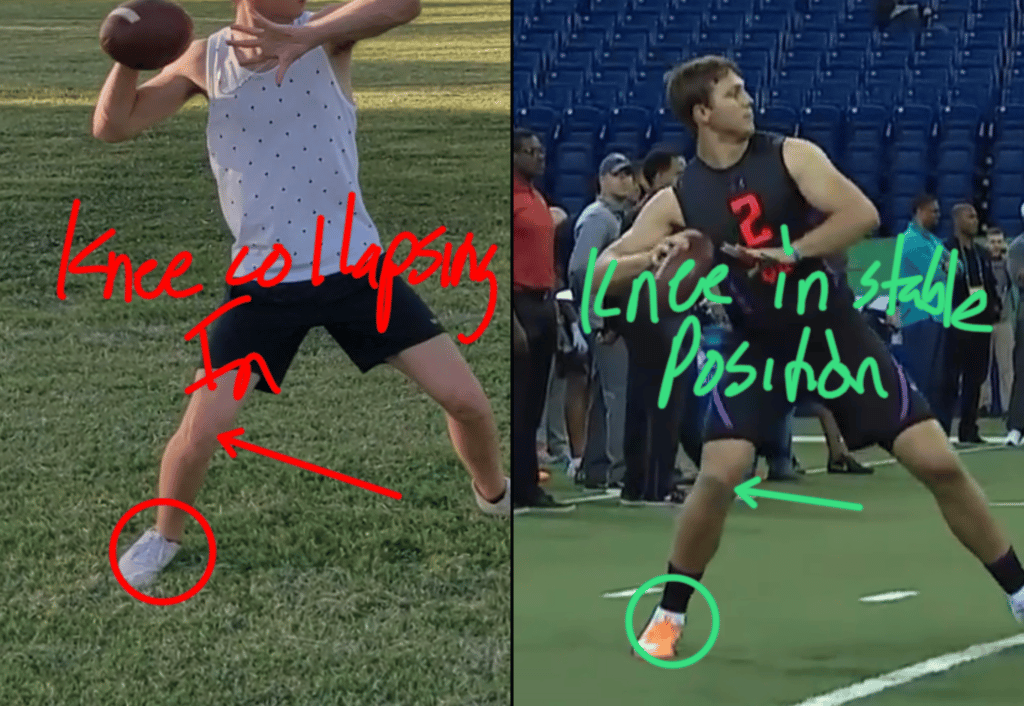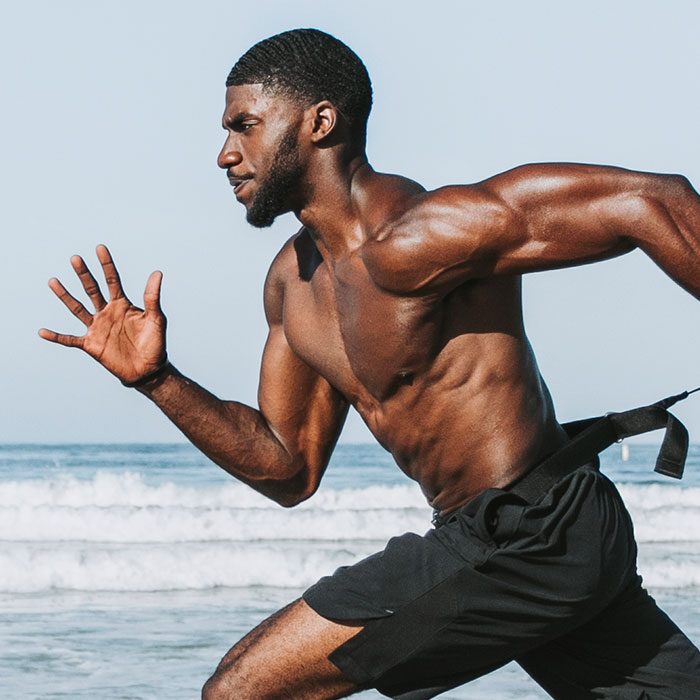
Sign Up To Receive Our 7 Steps Of How To Throw A Football
After helping Quarterback from across the world improve their throwing mechanics I have made this 7 Step How To Throw A Football Video Series that goes in depth into the key parts of throwing the football. Each video is only a few minutes long but it is packed with information specific to how to improve your mechanics. Simply fill out the form below to get started.
What Is Included In The 7 Step Video Series Step By Step
Step 1: How To Grip The Football

When getting started with throwing the football it is important to understand how to properly grip the ball. There are so many quarterbacks who have an ineffective arm motion because of the grip. I recommend quarterbacks hold the ball with their index finger close to the top of the ball, the middle finger slightly above the top lace and the ring finger below the second lace. Then the pinky finger is on the 5th lace and really spread out. Everyone is different with out they hold it but it is important to get the throwing hand in a position to have a strong wrist flick to generate the most force on the ball.
Step 2: Proper Load Of The Upper Body

The next part when throwing a football is loading the throwing arm. The load is essentially the first action backwards and syncs up with the initial step forward. In order to throw the football properly you must build momentum from the first action in loading the wrist, arm and shoulder. A general rule of thumb is the nose of the football should face either down or straight back when loading. A common mistake I see is quarterbacks load the ball so the nose of the football faces upwards or outwards. This is a big mistake and will undoubtedly lead to a poor throwing motion.
Step 3: How To Load The Lower Body

The most important part about this is loading into the back leg and hip. I tell quarterbacks there should be 60% of the body weight on the back foot and 40% on the front after taking the initial step forward. There is a lot of debate around the length of the first step and if the base should be wide or keep the feet shoulder width. I find the best results come from having a little longer stride as there is more ability to shift the weight forwards and therefore adds a little more throwing distance or velocity to the throw. At the end of the day the base is important and it is something that feels comfortable when done correctly.
Step 4: Most Important Part To Understand
The next step is super important and is really the reason I came up with this how to throw a football video series. When watching professional quarterbacks what stands out is the efficiency of their throwing arm. There is almost no wasted motion from the load until the release of the football. So I really started breaking this down to better understand the actions of the throwing hand.
What stands out is the wrist of the throwing hand is turning forwards towards the intended target while the movement of the arm forward is gaining speed. This seems to be critical when it comes to arm strength and throwing a consistent perfect spiral football. It will make more sense when you watch the video but this is one of the most important fundamental skills of throwing a perfect spiral.
Step 5: Finish Onto Front Foot
Some of these steps will have some carry over as the throw is coming to a finish. A common difference I see between top quarterbacks and quarterbacks who struggle to properly throw the ball with much power is the ability to continue to shift their weight forward after the ball leaves the throwing hand. The more lower body work you are able to accomplish the lower the amount of stress will be put on the throwing arm.
One of the most common bad habits young quarterbacks make is extending the front leg while releasing the ball. This totally stops the weight from shifting forward and usually has a big impact on the ability to generate much power in the throw. The correct position for the knee to be in while the weight is shift forward is with the knees slightly bent. This allows the weight to be absorbed in the front leg which ends up being the dominant foot when it comes to stability and balance for the whole body.
Step 6: Hip And Shoulder Separation

When it comes to throwing the football farther it is widely known that achieving great hip and shoulder separation is very important. I have done a lot of work to understand how to improve this particular area and I have found that for one many quarterbacks vary there ability to achieve great hip and shoulder separation but additionally the most amount of benefit comes from the hips instead of the non throwing hand.
When doing breakdowns I see quarterbacks all the time who emphasize turning the shoulder of the non throwing hand in order to generate more power. While this probably does provide some benefit to the ability to throw a football, I have found utilizing more hip rotation actually leads to greater velocity as well as gives the body the ability to achieve a greater degree of separation from the hips and shoulders.
Step 7: Wrist Flick And Follow Thru

The last part of the throw is the wrist flick which is when the football leaves the index and the arm continues traveling downwards and across. In order to throw a great spiral the index finger should be the last finger to touch the ball, not the ring finger or middle finger. The ability to flick the wrist with a lot of power has been repeatedly referenced as another important contributor to be able to throw the football with more power.
In order to achieve a great wrist flick, after you release the ball the index finger closest to the ground while the remaining fingers are facing straight up towards the sky. This ensures you are getting plenty of action in the wrist as well as large amount of internal rotation in the shoulder. From there, the arm should finish forwards towards the intended receiver then travel all the way down through to at least chest level if not, then below chest level.
A common error I see in quarterbacks is they stop their after they release the ball. In order to throw a football with maximum velocity the arm should be traveling at an extremely fast rate. In order for that to happen the follow thru should not stop at ninety degrees and put additional stress on the arm. In order to be a great quarterback you have to be able to keep your arm healthy and resist injury. There is no better way to guarantee arm pain and soreness than stopping the follow thru early when you throw a football.







